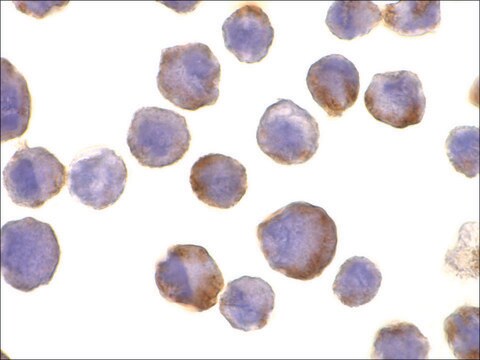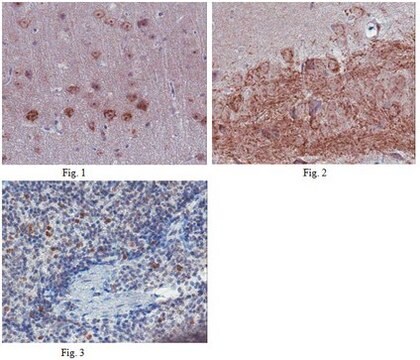ABT94
Anti-Adam17 Antibody
serum, from rabbit
Synonym(s):
Disintegrin and metalloproteinase domain-containing protein 17, ADAM 17, TNF-alpha convertase, TNF-alpha-converting enzyme, CD156b
About This Item
Recommended Products
biological source
rabbit
Quality Level
antibody form
serum
antibody product type
primary antibodies
clone
polyclonal
species reactivity
human
technique(s)
immunocytochemistry: suitable
western blot: suitable
NCBI accession no.
UniProt accession no.
shipped in
wet ice
target post-translational modification
unmodified
Gene Information
human ... ADAM17(6868)
General description
Specificity
Immunogen
Application
Cell Structure
ECM Proteins
Western Blotting Analysis: A representative lot detected pro-form and the truncated, mature form of Adam17 in COS cell lysates (Schlondorff, J., et al. (2000) Biochem J. 1(347):131-138.).
Western Blotting Analysis: A representative lot detected Adam17 in COS-7 cell lysates (Zheng, Y., et al. (2002). J Biol Chem. 277(45):42463-42470.).
Western Blotting Analysis: A representative lot detected the Pro-form and the truncated. mature form of Adam17 in COS-7 cell lysates (Le Gall, S. M., et al. (2010). J Cell Sci. 123(22):3913-3922.).
Quality
Western Blotting Analysis: A 1:1,000 dilution of this antibody detected Adam17 in 10 µg of A431 cell lysate.
Target description
Physical form
Storage and Stability
Handling Recommendations: Upon receipt and prior to removing the cap, centrifuge the vial and gently mix the solution. Aliquot into microcentrifuge tubes and store at -20°C. Avoid repeated freeze/thaw cycles, which may damage IgG and affect product performance.
Analysis Note
A431 cell lysate
Disclaimer
Not finding the right product?
Try our Product Selector Tool.
Storage Class
10 - Combustible liquids
wgk_germany
WGK 1
Certificates of Analysis (COA)
Search for Certificates of Analysis (COA) by entering the products Lot/Batch Number. Lot and Batch Numbers can be found on a product’s label following the words ‘Lot’ or ‘Batch’.
Already Own This Product?
Find documentation for the products that you have recently purchased in the Document Library.
Our team of scientists has experience in all areas of research including Life Science, Material Science, Chemical Synthesis, Chromatography, Analytical and many others.
Contact Technical Service








